All About the Cape Tribulation Tropical Research Station
Yes, we are actually a research station (and have been here for 30 years now). We are more than just a research station . We are a unique, close-knit scientific community with unique community values and goals. So what do we do here?? Well, we have a continuous stream of students from all over the world doing research projects – mostly as part of their University course requirements. Their projects can cover everything from bat behaviour to pollination biology, to renewable energy and to weed control and much more.. it’s a big list. We have even done research into community attitudes to a number of issues – including to World Heritage attitudes and attitudes to renewable energy. How are we funded? At the moment primarily by student fees and by some limited grants such as “Everyone’s Environment Grant” and “Caring for Country” plus some assistance from Terrain. Other funds come from donations and Hugh and Talia's Age Pensions. Luckily we are independent – so we can choose where we want to go! (and unlike institutions, our costs of operating are very low. So much good science can be done with a note book and pencil and pretty simple equipment - even now.
Our Philosophy, Our Way of Life
The Cape Tribulation Tropical Research Station and Bat House were founded in 1988 in order to study various aspects of the wet tropics ecosystems of Cape Tribulation, to assist in and promote the preservation, restoration, and protection of the Daintree rainforest since the listing of the area as World heritage was assured, to provide environmental and scientific educational facilities for the general public, to set an example for Queensland and Australia, and to demonstrate to the world how it is possible to live comfortably while maintaining a way of life which minimises its environmental impact, using little fossil fuel and maximising the use of local resources for sustenance and shelter. As Morpheus said in "The Matrix", "There is a difference between knowing the path and walking the path." Here at Cape Tribulation, we walk the path.
We firmly believe that it is the responsibility of every human being on this planet to help preserve and protect it, both for ourselves and for those who come after us. We must walk "in balance with the Earth Mother" and use all our resources, including this website, to encourage others to do the same
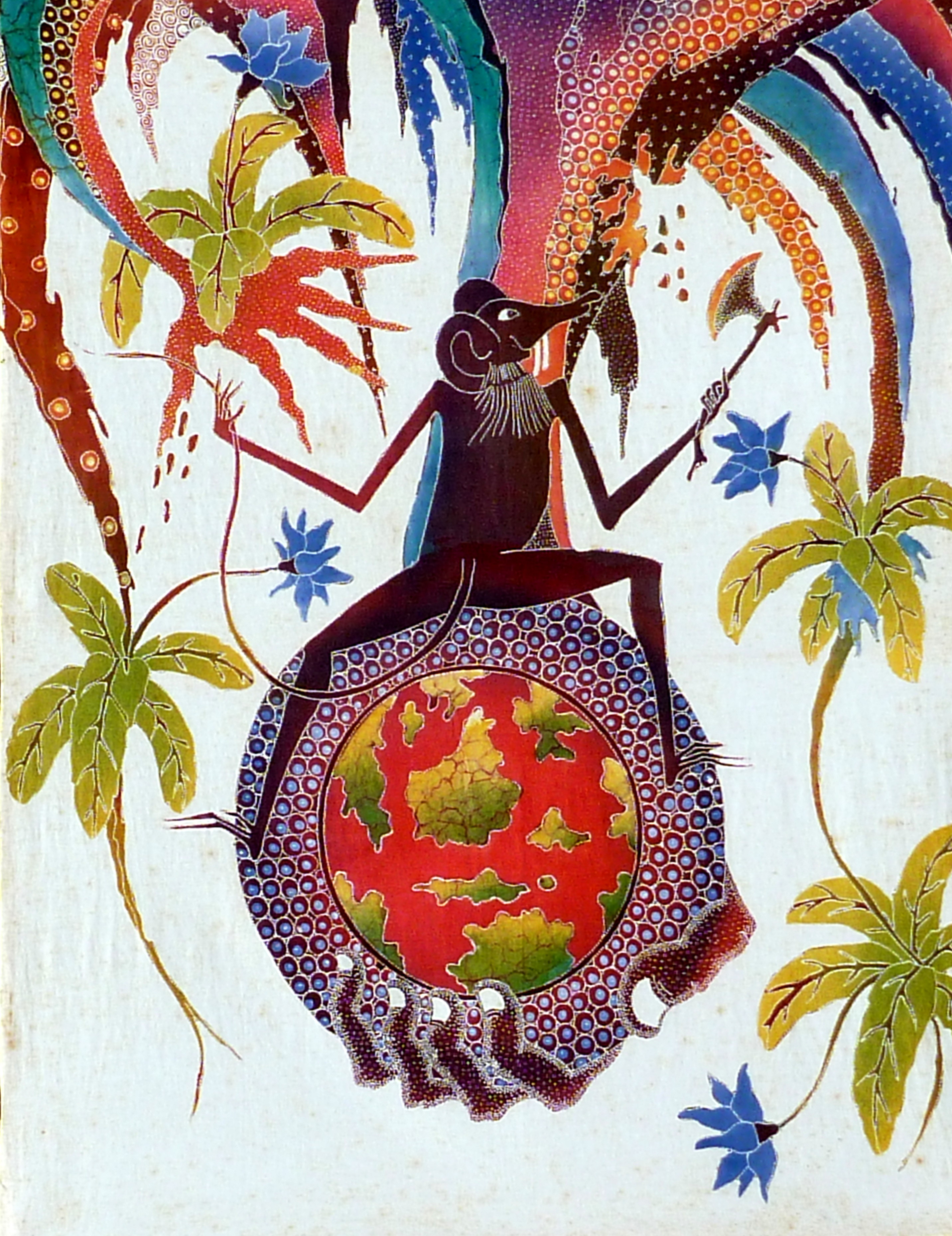
This picture is amazing. I bought this batik in Jakata in early 1990s while on a biology field trip to Indonesia with a group from the University of Queensland. It is an original - and, sadly, I have no idea who the artist might be. It is also incredibly prescient. The rat represents humankind - busily chopping off the hand (the environment) that supports us. I look at this every day (it hangs in the main lab). The urgent need to stop this chopping is one of the things that sustains us. It's what the Foundation and the Station are about.
Some recent research projects:
Meiofauna
Nicolas, an intern from France, examining the “Meiofauna” of our local beaches. Meiofauna are the little creatures that live between the sand grains on our beaches – and which could be an indicator of our beach health.
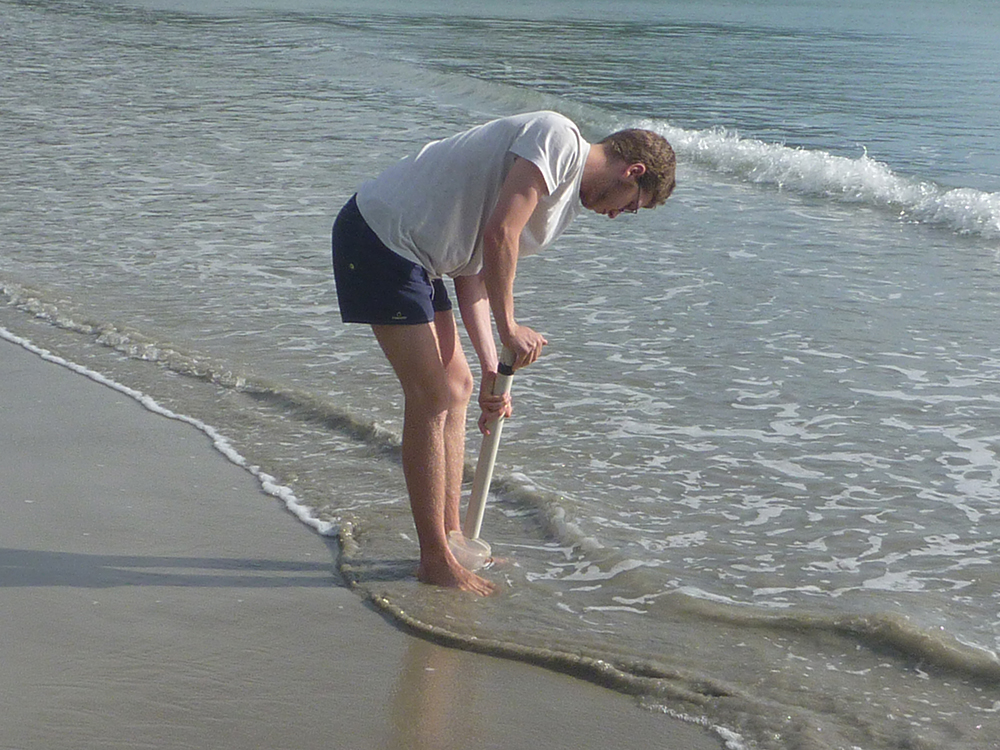
Nicolas taking sand samples at Cape Trib beach |

A crustacean – about 1mm long |

An isopod (related to slaters) |
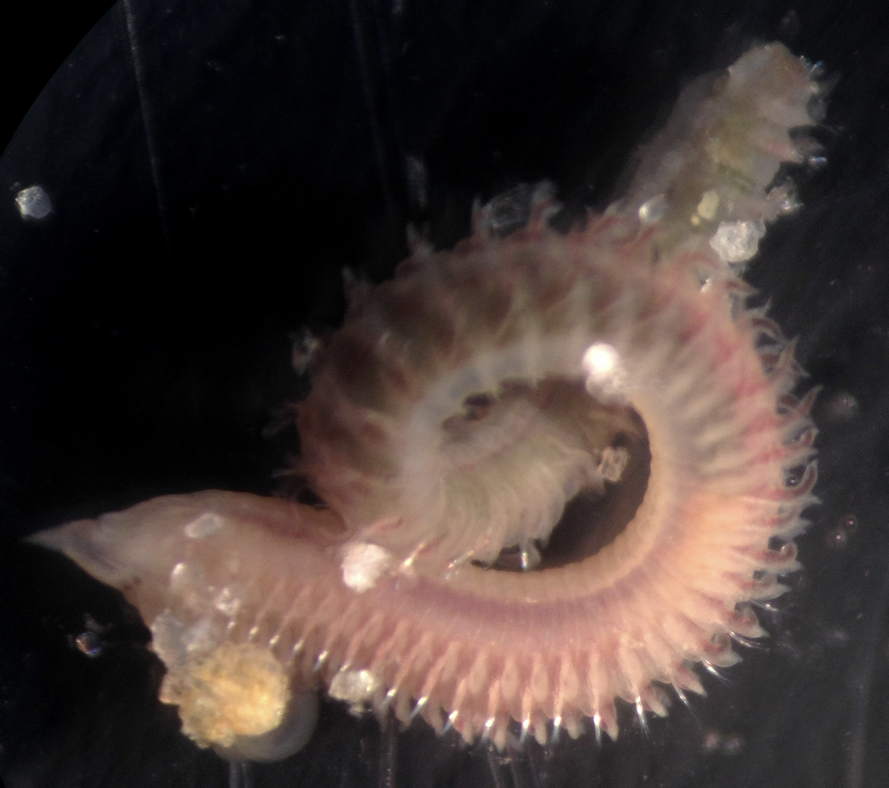
A sand dwelling marine worm (polychaete) - about 3 mm long! |
Pollinators of the Littoral Forest
Ilse Kamps, an intern From The Netherlands, discovering the pollinators of the common plants of the littoral forest (that highly endangerd vegetation that fringes the beaches). She found that it was mostly wasps and native bees that are the pollinators – and their floral preference depend a lot on what type of sugars are in the nectar.

Ilse doing sugar analysis of nectar using HPLC (High Performance Liquid Chromatography). |
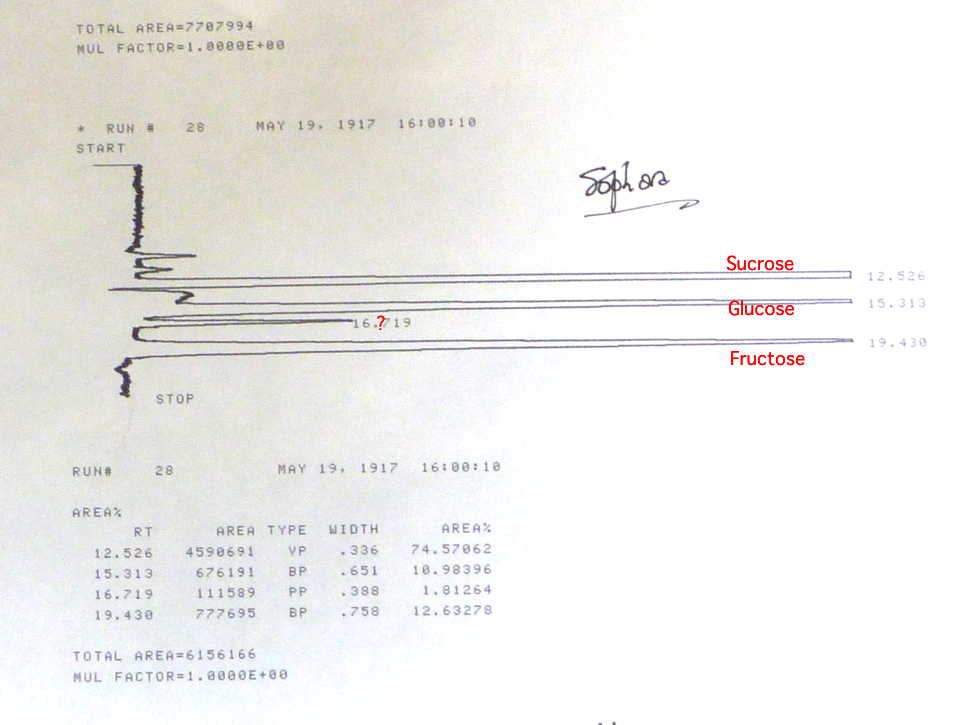
Sophora (necklace plant) has a nectar which is very high in sucrose. |

Rainforest bee visiting Dillenia flower |

Bee visiting Sophora flower |
Fig phenology
Our giant cluster figs (Ficus variegata) are proving to be an interesting “canary” for observing climate change. Fifteen years ago, our cluster figs fruited “on schedule” with the males fruiting first (as they supported the pollinating wasps), and the females fruiting two months later (when the wasps were ready to emerge). Now it’s all over the place, (as any aware fruit farmer will tell you).
Cluster fig (Ficus variegata) in full fruit |
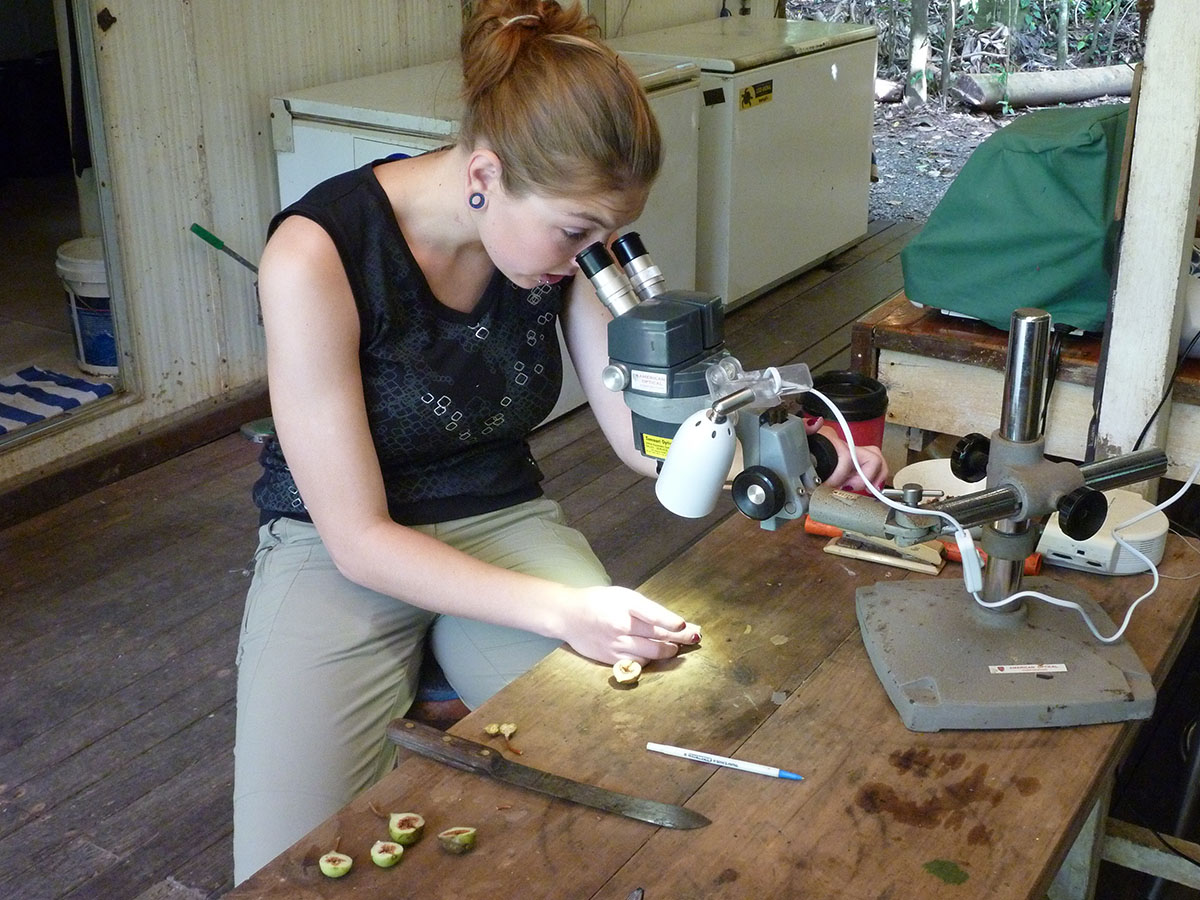
Sonja, an intern from Germany, “sexing” figs. |
Trigeminal Neuralgia
Research into the treatment of trigeminal neuralgia is a continuing project that is helping people all across the globe. In 2000, Hugh had his first attack of this debilitating neural complaint, and, in order to manage what can be an excruciatingly painful condition, developed an experimental treatment for it and tested it on himself (it helps being a neurobiologist by training). The treatment methodology is continuing to be re-evaluated as new data is received.
Trigeminal nerve system - the three main branches of the trigeminal nerve and their collaterals are highlighted in red |

Treatment – a mouthguard and 10% capsaicin (ouch!) |

